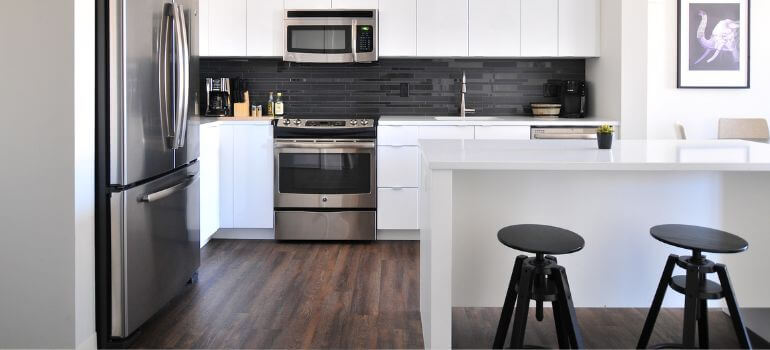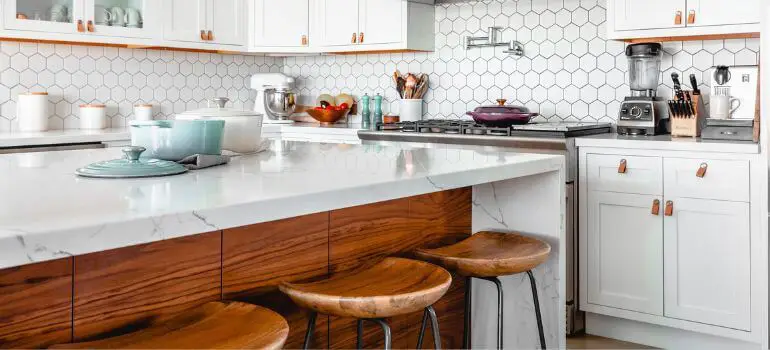Introduction
In the heart of every home, the kitchen stands as a hub of activity. Choosing the right kitchen island design is crucial for optimizing both functionality and aesthetics. One key decision to make is between a two-level and a one-level kitchen island.
Understanding Your Kitchen Space
A. Assessing Size and Layout
Determining the available space is essential before committing to a specific island design. A two-level island may require more room, while a one-level option might be a better fit for cozier kitchens.
B. Traffic Flow Considerations
Explore how foot traffic moves within your kitchen. A one-level island may offer seamless navigation, while a two-level design could create distinct zones for cooking and socializing.
Functionality: Cooking and Prep Space
When it comes to designing the perfect kitchen island, understanding how the chosen layout caters to cooking and prep space is paramount.
A. One-Level Island Efficiency
A single-level island is a champion in efficiency, providing a vast and uninterrupted surface for various kitchen activities. This design is a practical choice for those who prioritize a streamlined and straightforward cooking and prep process. With an expansive countertop, you have the freedom to spread out ingredients, chop, and prepare meals without encountering interruptions.
B. Two-Level Island Benefits
On the other hand, a two-level island introduces a unique approach to cooking and prep space. By creating distinct tiers, it allows for a separation of tasks. The lower level can be dedicated to the primary cooking activities, such as chopping and cooking, while the elevated tier becomes an ideal space for assembling dishes or laying out prepared meals. This tiered arrangement enhances multitasking, offering a dynamic and efficient culinary workspace.
Whether you opt for the continuous expanse of a one-level island or the tiered functionality of a two-level design, considering your cooking habits and workflow is crucial. Each layout brings its own set of advantages, contributing to a kitchen space that seamlessly integrates into your culinary lifestyle.
Aesthetic Appeal
A. Modern Elegance of a Two-Level Island
For those seeking a contemporary and visually appealing kitchen, a two-level island offers a stylish solution. The tiered design adds a layer of sophistication, creating a focal point in the space.
B. Simplicity and Classic Charm with a One-Level Island
A one-level island embodies simplicity and classic design. It seamlessly integrates into various kitchen styles, providing a timeless and clean aesthetic.
Seating Considerations

When choosing between a two-level and a one-level kitchen island, the seating arrangement plays a pivotal role in shaping the dynamics of your kitchen space.
A. Cozy Gatherings with a Two-Level Island
The elevated seating area of a two-level island transforms your kitchen into a social hub. This design encourages intimate gatherings, allowing friends and family to engage in conversations while the chef works their culinary magic on the lower tier. The tiered structure creates a sense of separation, making the seating area feel like a designated space for dining within the kitchen. If you envision your kitchen as a cozy spot for socializing and entertaining, a two-level island may be the perfect choice.
B. Versatility of a One-Level Island
A one-level island with integrated seating offers a different kind of versatility. The continuous countertop allows for a more casual dining experience. It’s a practical choice for families, providing a convenient spot for quick meals or a place for children to do homework while staying connected with the rest of the household. If you prefer a laid-back and inclusive atmosphere in your kitchen, a one-level island with integrated seating might be the ideal fit.
Considering how you envision using the seating area—whether for casual meals, family gatherings, or entertaining friends—will guide you in selecting the kitchen island design that best complements your lifestyle and social preferences.
Maintenance and Cleaning
A. Simplified Cleaning with a One-Level Island
Cleaning and maintaining a one-level island are generally more straightforward, as there are no additional surfaces or nooks. This can be advantageous for busy households.
B. Challenges of Cleaning a Two-Level Island
The tiered design of a two-level island may pose challenges when cleaning. Crumbs or spills on the upper level may require extra attention, making maintenance a consideration.
Budget Considerations
When embarking on the journey of kitchen island design, it’s essential to factor in budget considerations. Your financial constraints will play a significant role in determining the most suitable island design for your home.
A. Cost Efficiency of a One-Level Island
For those mindful of their budget, a one-level island often proves to be a cost-effective choice. From construction to installation, the simplicity of the design generally incurs lower expenses. The single, expansive countertop requires less material, reducing both material and labor costs. If you’re looking for a stylish yet economical option, a one-level island might be the perfect fit for your budget.
B. Investment in Style with a Two-Level Island
While a two-level island may demand a higher initial investment, many homeowners view it as a worthwhile expense. The added cost is often attributed to the intricacies of the tiered design, providing both functionality and aesthetic appeal. The elevated tier not only enhances the visual appeal of the kitchen but also introduces a unique space for socializing. If your budget allows for a bit more flexibility and you’re seeking an island that makes a style statement, a two-level design might be the ideal choice.
As you navigate the decision-making process, it’s crucial to strike a balance between your budgetary considerations and your desire for a kitchen island that meets both your functional and aesthetic needs. The right choice will not only enhance your kitchen space but also align seamlessly with your financial plans.
Making Your Decision
Consider your lifestyle, kitchen habits, and aesthetic preferences when deciding between a two-level and a one-level kitchen island. Both designs offer unique advantages, and the right choice ultimately depends on your specific needs.
Conclusion
In the realm of kitchen design, the choice between a two-level and a one-level island is a personal one. Each design brings its own set of benefits, contributing to the heart of your home.
Frequently Asked Questions
The choice between a one-level and two-level island in a small kitchen depends on your priorities. A one-level island can maximize space and create a seamless look, while a two-level design might offer additional functionality without compromising on aesthetics.
Yes, both one-level and two-level islands can accommodate additional features like sinks or stovetops. However, it’s essential to consider the available space and the impact on functionality. A one-level island may offer a more straightforward integration of such features.
Two-level islands often align with modern design trends, providing a visually striking focal point in contemporary kitchens. The tiered structure adds an element of sophistication and versatility, making it a popular choice among those seeking a stylish kitchen.
To maximize storage in a one-level island, consider incorporating deep drawers, pull-out trays, or built-in shelving. Utilize the available space efficiently and choose organizational solutions that suit your kitchen needs.
Common materials for kitchen islands include granite, quartz, butcher block, and stainless steel for countertops. The choice of materials depends on your aesthetic preferences, budget, and the level of maintenance you’re willing to undertake.



